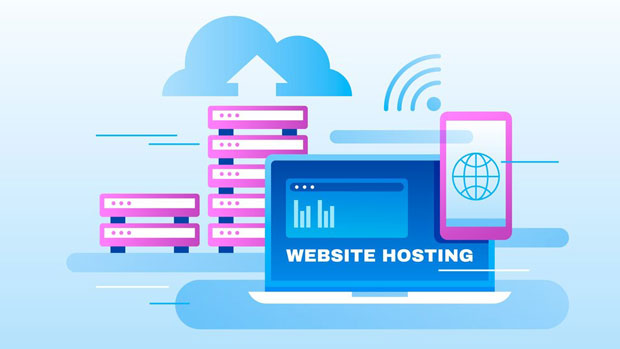When it comes to maintaining anonymity and privacy while navigating the internet, proxies play a critical role. Specifically, sock s5 proxies are popular for their ability to handle various types of traffic without altering data. In the ever-evolving world of proxy services, PYPROXY and HydraProxy stand out as two choices frequently compared for their performance in SOCKS5 environments. While both services claim to offer robust anonymity, their methodologies and effectiveness differ. This article explores the features, capabilities, and overall anonymity offered by Pyproxy and HydraProxy, delving into their unique aspects and helping you make an informed choice. What is socks5 proxy?SOCKS5 is an internet protocol used to route traffic between the user and the destination server without altering the content of the data. It is highly valued for its versatility, speed, and, most importantly, its ability to work with a range of applications and protocols. SOCKS5 proxies support a range of functionalities, such as UDP (User Datagram Protocol) and TCP (Transmission Control Protocol) traffic, providing users with seamless browsing experiences while maintaining privacy.Overview of PyproxyPyproxy is an open-source proxy tool designed to help users set up anonymous and secure SOCKS5 proxies. It is primarily used to create proxy servers that anonymize users' internet traffic and allow access to geo-blocked content. Pyproxy works by acting as a mediator between the user's device and the website or service they wish to access, masking the user's real IP address in the process.Pyproxy is known for being lightweight and customizable, making it popular for users who want to set up their own proxy servers with minimal effort. The service comes with various features, such as the ability to rotate IP addresses and integrate with different authentication mechanisms for enhanced security. Its primary strength lies in its ability to provide users with full control over their proxy settings, making it ideal for those looking for flexibility.Overview of HydraProxyHydraProxy, on the other hand, is a premium proxy service that provides users with high-quality, anonymous SOCKS5 proxies. Unlike Pyproxy, HydraProxy is a managed service, meaning that users don't need to worry about setting up their own proxies or dealing with server configurations. HydraProxy offers features such as high anonymity, reliability, and fast speeds, along with a large pool of IP addresses to choose from.One of the main selling points of HydraProxy is its ability to handle large volumes of traffic with minimal downtime. The service is tailored for both individuals and businesses that need high-performance proxy solutions for scraping, security testing, or maintaining online anonymity. HydraProxy offers a streamlined user experience with built-in features such as automatic IP rotation and built-in security protocols.Anonymous Browsing: Pyproxy vs HydraProxyWhen comparing Pyproxy and HydraProxy in terms of anonymity, both services offer high levels of protection, but with distinct differences in how they operate.Pyproxy AnonymityPyproxy's strength lies in its customizability, allowing users to adjust settings that affect their level of anonymity. By rotating IP addresses regularly and utilizing different security protocols like SSL (Secure Sockets Layer), users can effectively mask their identity. However, the responsibility for maintaining anonymity lies primarily with the user. For example, if a user fails to properly configure the proxy, they may unintentionally leak personal information or expose their real IP address.HydraProxy AnonymityHydraProxy provides a more hands-off approach to anonymity. As a managed service, HydraProxy handles most of the technical aspects of maintaining a secure and anonymous browsing experience. The service offers high-level encryption, automatic IP rotation, and robust security protocols, which reduce the risk of identity leakage. HydraProxy’s system is designed to be foolproof, with its automated features ensuring that users maintain a high level of anonymity at all times.Performance: Speed and ReliabilityAnother key factor in choosing between Pyproxy and HydraProxy is performance. Speed and reliability are crucial for users who rely on proxies for tasks such as web scraping, bypassing geo-restrictions, or security testing.Pyproxy PerformanceAs an open-source tool, Pyproxy's performance can vary significantly depending on the user's setup. Users with the technical knowledge to optimize their Pyproxy server can achieve high performance, but this requires a good understanding of server configurations and proxy management. The reliability of Pyproxy also depends on the user's ability to maintain the server. For instance, users may experience slower speeds or downtime if they do not manage their server properly.HydraProxy PerformanceHydraProxy, being a premium service, guarantees high-speed connections and reliability. With dedicated servers, optimized routing, and a large pool of IP addresses, HydraProxy ensures minimal latency and fast browsing speeds. Since the service is managed, users don't need to worry about server downtimes or slow speeds due to misconfigurations. HydraProxy’s infrastructure is designed for scalability, making it a good option for both personal and business use.Security Features: Pyproxy vs HydraProxyWhen it comes to security, both Pyproxy and HydraProxy have strong offerings, but they differ in terms of implementation and control.Pyproxy SecurityPyproxy provides users with a range of security options, such as SSL encryption, but it is ultimately up to the user to configure these features. While this provides a high degree of flexibility, it also means that users may inadvertently leave themselves exposed if they fail to implement security measures correctly. For instance, improper IP rotation or weak authentication mechanisms could compromise the anonymity that Pyproxy offers.HydraProxy SecurityHydraProxy takes a more robust approach to security by offering automatic encryption, secure tunneling, and IP rotation. Its managed service ensures that users don’t need to worry about security vulnerabilities. The service continuously monitors its proxies to ensure they comply with industry standards, offering a high level of protection against attacks, data leaks, and identity exposure.Cost ComparisonPyproxy CostsAs an open-source tool, Pyproxy is free to use. However, users may incur costs related to hosting their proxy servers or purchasing additional security tools. These costs can vary depending on the user's requirements and the hosting infrastructure they choose.HydraProxy CostsHydraProxy is a premium service that charges a subscription fee based on usage. While it offers a higher level of support and performance, the cost can be prohibitive for users on a tight budget. The pricing structure typically includes different tiers, based on the number of IP addresses, the level of anonymity, and the required bandwidth.In conclusion, both Pyproxy and HydraProxy offer valuable proxy services in a SOCKS5 environment, each with its own strengths and weaknesses. Pyproxy is ideal for users with technical expertise who want to maintain full control over their proxy server, offering high customization at the expense of ease of use. On the other hand, HydraProxy is suited for users seeking a managed solution that guarantees anonymity, speed, and security with minimal configuration. Ultimately, the choice between Pyproxy and HydraProxy will depend on your specific needs, whether you prioritize flexibility and control or a hassle-free, high-performance service.
Oct 15, 2025



































































